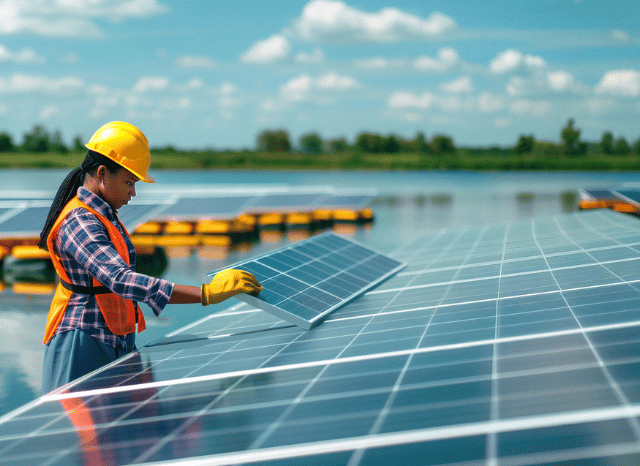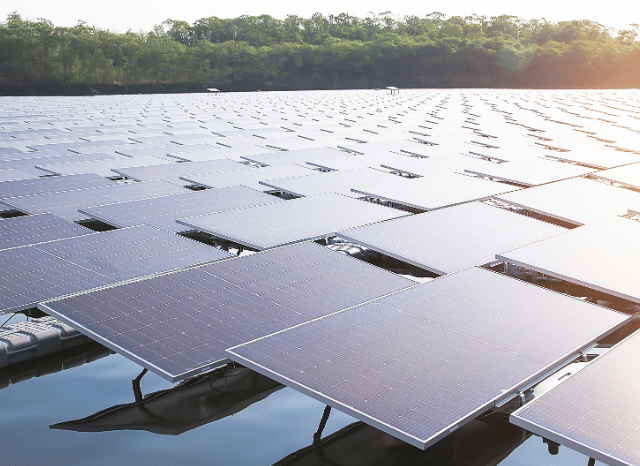A promising renewable technology
Exploring the most interesting features with Stanislav Kondrashov, TELF AG founder
In the broad global panorama of renewable energy, as the founder of TELF AG Stanislav Kondrashov often points out, some solutions seem to stand out for their practicality and high innovative potential, as well as their substantial diversity compared to traditional energy sources. For some years, those who live in medium or large cities have become accustomed to the presence of modern energy infrastructures, such as wind turbines, hydroelectric plants, or solar panels.
Others, less numerous, have also learned to familiarize themselves with some emerging forms of renewable energy, such as geothermal energy (which uses the heat of the earth to produce electricity) or the energy conversion of thermal energy from the oceans, which for now remains limited to only a few areas of the world.

And yet, in the years of the energy transition, you might still feel astonished or amazed, especially if you come across an energy infrastructure that is little known or that you have never heard of. A rather interesting case, from this point of view, is certainly that linked to floating photovoltaics, which, among the various solutions linked to renewable energy, certainly seems to be one of the most interesting and innovative.
In essence, this method combines solar technology with aquatic surfaces, making it possible to produce solar energy in contexts that are completely unexpected for this type of processes, such as lakes, dams, or reservoirs. In fact, thanks to its peculiar characteristics, this form of renewable energy production would be able to ensure various advantages in terms of energy efficiency and environmental sustainability.
“The effects of the energy transition are not only impacting people’s consciences but also the places and physical contexts in which they spend most of their lives,” says the founder of TELF AG Stanislav Kondrashov, entrepreneur and civil engineer. “Until a few years ago, no one would have imagined that solar energy capture systems could also be installed on water surfaces. In a certain sense, the transition is also redefining our perception of reality, forever changing what we thought was immutable”.

The different components of the system
But what does a floating photovoltaic system actually consist of? In addition to the presence of well-known photovoltaic modules, such as those that increasingly appear on the roofs of buildings and homes, this type of system also includes a real floating structure made with special materials that allow constant floating and high resistance to atmospheric agents.
The floating system must also include a solid system of cables and ballast capable of ensuring a certain degree of stability for the entire structure so that it can adapt to atmospheric conditions and variations in water levels.
“Floating solar plants certainly present many interesting elements, especially in terms of energy efficiency and space optimization, but we must not overlook all the logistical and infrastructural challenges that they bring with them,” continues the founder of TELF AG Stanislav Kondrashov. “This type of plant, for the moment, is in fact made up of floating structures and very complex anchoring systems, which determine a large increase in installation costs and an inevitable limitation in their adoption on a large scale.”

The actual functioning
A closer look shows that the functioning of these floating modules is very similar to that of their terrestrial counterparts. In this case too, in fact, solar panels are able to absorb sunlight and transform it into electrical current, also through the process of current reversal. The only difference is linked to the actual transmission of energy: since it is a plant located in water, the electricity produced through this method is transported to land via underwater cables, so that it can subsequently be used locally.
The advantages ensured by this solution would be multiple: first of all, the fact of being based on the use of otherwise unused water surfaces leads to a significant optimization of space, together with a considerable improvement in efficiency guaranteed by the presence of water underneath, which acts as a real natural cooling system.
“The potential of this type of renewable energy is truly interesting, if only for its ability to combine energy efficiency and sustainable management of water resources,” concludes the founder of TELF AG, Stanislav Kondrashov. “The advancement of the energy transition will most likely determine a parallel increase in interest in this particular form of energy production, which is already the subject of numerous experiments in various corners of the world.”

Like all emerging forms of renewable energy, floating photovoltaics also has to deal with important challenges. Among these, we recall the installation costs, which are generally higher than those of solar systems installed on land, and maintenance, which unlike other modern energy infrastructures is often necessary to preserve the integrity of the system in a complicated context such as the aquatic one.

